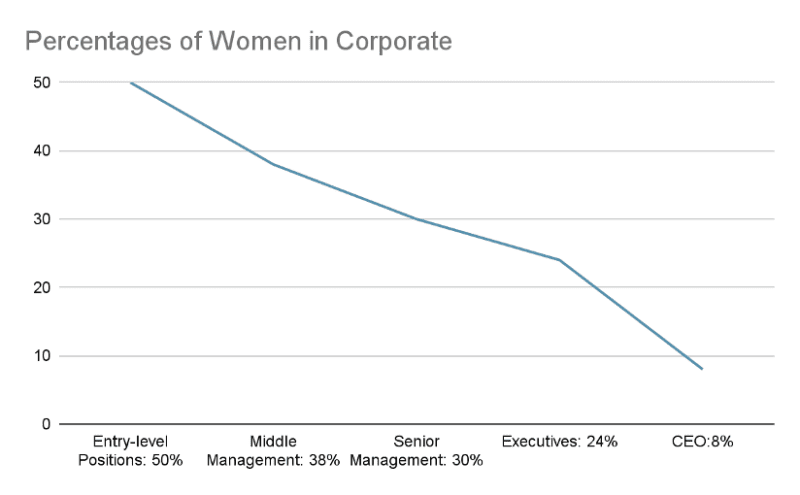Sovereign Seeds: Reclaiming MENA’s Agricultural Future
Reviving local food systems and unlocking rural prosperity
Insights from Bloomberg's 2023 GEI Report

Earlier this year, Bloomberg published their Gender Equality Index (GEI) report, helping companies track their progress in gender inclusion and how the implementation of diversity policies shape company performance. At a quick glance, this report might seem like just a set of data that reflect the current situation. But this report is more than just data; it’s a clarion call for action to align data, values, and action in bridging the gender equality gap.
In our era, data is king. However, while data informs, values transform. The key lies in reconciling the two to usher in an equitable future of shared prosperity.
In its 5th year, the GEI assesses companies based on five critical pillars, including Leadership and Talent Pipeline, Equal Pay and Gender Pay Parity, Inclusive Culture, Anti-Sexual Harassment Policies, and External Brand. The most striking findings involve the Leadership and Talent Pipeline. This pillar is the basis upon which all other pillars ladder up in a work setting, yet it is the most revealing in terms of the lack of gender equality.
While women occupy 50% of entry-level positions, their representation dwindles drastically in senior roles, with a mere 8% at the CEO level. This stark contrast raises the question: Why aren’t women ascending to high-level leadership?

The Declining Representation of Women in Corporate Hierarchies.
Aptly titled “Women in Corporate,” the data above showcases the disparity in gender equality in corporate roles. Starting from the base, we see a relatively balanced gender representation at the entry-level positions, which reflects a promising trend and indicates an unbiased hiring process at the initial stage of their career.
However, as we climb the corporate ladder, the picture starts to change drastically. Women constitute only 38% of middle management, a figure which further drops to 30% at the senior management level. The executive tier sees a steeper decline, with women holding just 24% of these positions. The rise to higher leadership for the role of CEOs, showcases the starkest gender imbalance.

What is evident from this graph is not just the underrepresentation of women in higher corporate echelons, but the progressive decline in their numbers as we move up each level. In their 2022 gender snapshot publication, the United Nations reports that at the current rate, it will take 140 years for women to be represented equally in positions of power and leadership in the workplace.
 Bias and negative perception of non-dominant groups are significant challenges in society with high levels of social inequity. Feminist economist Professor Jayati Ghosh, through her vast body of research, has noted that societal perceptions and biases can often overshadow the capabilities and achievements of women in leadership roles. This sentiment is further echoed in a recently published book “Glass Walls” by Amy Diehl and Leanne Dzubinski, which highlights numerous biases women encounter throughout their career trajectory.
Bias and negative perception of non-dominant groups are significant challenges in society with high levels of social inequity. Feminist economist Professor Jayati Ghosh, through her vast body of research, has noted that societal perceptions and biases can often overshadow the capabilities and achievements of women in leadership roles. This sentiment is further echoed in a recently published book “Glass Walls” by Amy Diehl and Leanne Dzubinski, which highlights numerous biases women encounter throughout their career trajectory.
What is obvious is the pressing need for corporations to address systemic barriers and biases that prevent women from advancing to higher leadership roles.
Clearly, women face challenges in their professional ascent. Corporations focusing on introspection and the re-evaluation of not just policies that exist, but also their values, is a first step in the right direction. They have the opportunity to make concerted efforts toward fostering an environment where talent thrives based on a commitment to build, nurture and cultivate talent irrespective of factors such as gender, race, culture, or religion.
Data derives meaning primarily from the significance we attribute to it, based on our values as leaders and organizations. While data serves as a foundational point, it’s not the end-all and be-all, especially since our decisions often lean towards our ingrained values.
Transforming biases requires understanding and time; direct bias training can assist, but it isn’t a long-term solution. Companies should consider the following to build for the long-term:

Bloomberg’s 2023 Gender Equality Index (GEI) report gives us the data. But it is up to both companies and individuals to understand the economic and societal benefits of gender equality and earnestly pursue it. We must transition from mere declarations to tangible, quantifiable change. The accolades received by the economic historian, Claudia Golden, for her work, “Why Women Earn Less Than Men,” which synthesized 200 years of data, will undoubtedly reinvigorate our dedication to addressing gender equality in the workplace.
In the pursuit of gender equality and gender justice, we are not just collecting data; we are crafting a better future, one where fairness and opportunity intersect. To reiterate, data informs, but it’s our collective vision and ambition that drive transformation.
Related Content
Comments
Deep Dives

Featuring
Clarisse Awamengwi
IE Correspondent
July 17 - 12:00 PM EST

Featuring
Russell McLeod
July 24 - 12:00 PM EST
RECENT
Editor's Picks
Webinars
News & Events
Subscribe to our newsletter to receive updates about new Magazine content and upcoming webinars, deep dives, and events.
Become a Premium Member to access the full library of webinars and deep dives, exclusive membership portal, member directory, message board, and curated live chats.
At Impact Entrepreneur, we champion fearless, independent journalism and education, spotlighting the inspiring changemakers building the Impact Economy. Diversity, equity, sustainability, and democracy face unprecedented threats from misinformation, powerful interests, and systemic inequities.
We believe a sustainable and equitable future is possible—but we can't achieve it without your help. Our independent voice depends entirely on support from changemakers like you.
Please step up today. Your donation—no matter the size—ensures we continue delivering impactful journalism and education that push boundaries and hold power accountable.
Join us in protecting what truly matters. It only takes a minute to make a real difference.
0 Comments